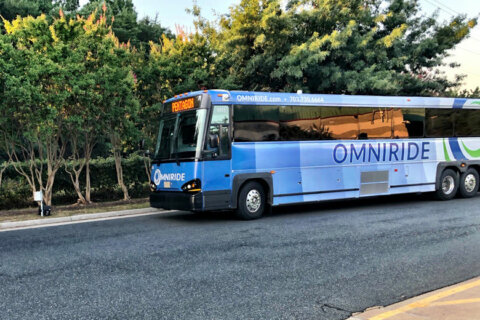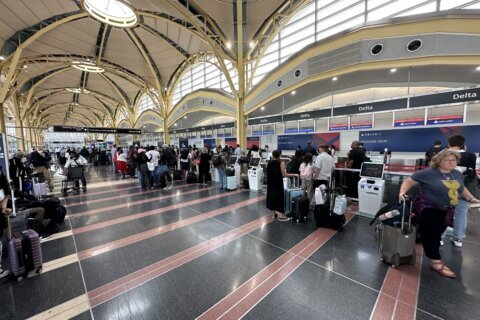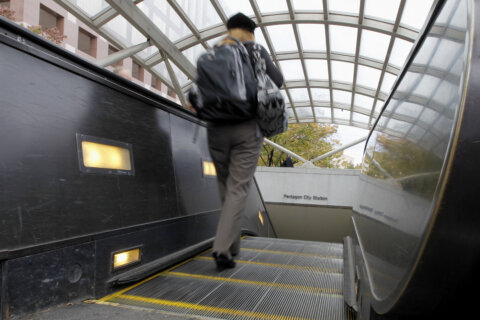Metro riders in D.C. were stuck in a tunnel near a fire last week because of Metro’s failure to follow safety procedures and a lack of training for train operators, a repeat of the “chaotic” response in the agency’s long-troubled Rail Operations Control Center.
“The atmosphere in the ROCC during this emergency was confused and chaotic with frequent yelling by personnel and conflicting instructions,” the Washington Metrorail Safety Commission found.
A number of issues “warrant immediate attention,” the commission said Friday.
The commission is ordering Metro to “eliminate the dangerous dysfunction” within the control center by requiring written protocols and checklists, improving communication, and avoiding overwhelming and distracting controllers with conflicting instructions.
The scale of the concerns mean the commission will now send a full-time staffer to the center effective immediately for ongoing inspections and observations.
The incident again raised concerns about Metro’s communication delays in calling the D.C. Fire and EMS Department, and about the department’s own response time.
“While Metro’s review into emergency response notification is ongoing, process changes are anticipated,” Metro said in a statement.
In this case, Metro and D.C. Fire ended up sending the initial response to the wrong station, Friendship Heights rather than Tenleytown.
During the effort to get train service restored after the incident, other major safety violations occurred that put workers and D.C. firefighters at risk of electrocution.
“The issues noted above are very similar to some of the issues that were addressed by the National Transportation Safety Board (NTSB) in its final report of the L’Enfant Plaza station electrical arcing and smoke accident that involved a fatality on January 12, 2015,” the commission said.
A rail controller described the center as chaotic, with the metaphorical right hand not knowing what the left hand was doing.
The incident was also similar to the June 2015 Federal Transit Administration findings about problems in the control center, showing that many of the issues have not been addressed, the commission stated.
In the last week, Metro has reinforced the rules for smoke and fire incidents with the Rail Operations Control Center, and increased safety supervision of the control center to be sure all rules are followed.
“We welcome their reviews,” Metro General Manager Paul Wiedefeld told WTOP Friday afternoon. “… There’s definitely some training things that we need to go through. The procedures are there. We just need to obviously do a better job training and training and training and training, so that’s what we’ll do.
“Any incident, we want to make sure we do the best we can every time,” he said.
What happened
First, a rail controller directed the train carrying riders to continue from Friendship Heights toward reported “light sparks” near Tenleytown Dec. 10. The report of a smoke or fire incident should have prevented any riders from being sent down the tracks due to Metro policies implemented after similar dangerous incidents.
“The controller’s actions violated Metro’s safety rules and procedures for smoke/fire incidents, and immediate corrective action is underway,” Metro said.
The situation was exacerbated by problems getting that train turned around to move away from the fire.
As the train operator tried to turn off the train’s ventilation system and then reverse the train to Friendship Heights, she accidentally flipped the wrong circuit breakers.
So instead of turning off the fans as required in fire incidents following Glover’s death near L’Enfant Plaza, she accidentally flipped on the train’s brakes and turned off the train’s lights.
That led to the passengers sitting on a dark train for nearly an hour as it crawled at about 2 mph back toward Friendship Heights.
Riders on the train reported growing smells of smoke as time wore on.
Metro now acknowledges “an unacceptable delay.”
An internal review concluded there was not enough help for the train operator to troubleshoot the issues, and that train operators do not have enough training on safety procedures.
The safety commission found the controller ignored a checklist meant to help with the troubleshooting process that could have resolved the issue and gotten riders out of danger much faster than the 50 minutes it took Dec. 10.
Train operators will get refresher training on how to keep themselves and riders safe in similar incidents.
“Additional action is planned to improve training and emergency response times,” Metro said.
Worker safety violations
The Metro workers and D.C. firefighters who responded to fix the electrical fire could have been killed due to “critical errors” by rail controllers and that Emergency Response Team.
Power was apparently turned on to the third rail at the wrong time.
“Protocols to protect workers from electrical injury were not followed in this incident, and appropriate corrective action was immediately undertaken as a result, including administrative processes, increased supervision, and reinforcement of policies,” Metro said.
The Washington Metrorail Safety Commission was more direct, finding that Metro turned the third rail power back on while D.C. Fire and EMS were still on the tracks.







